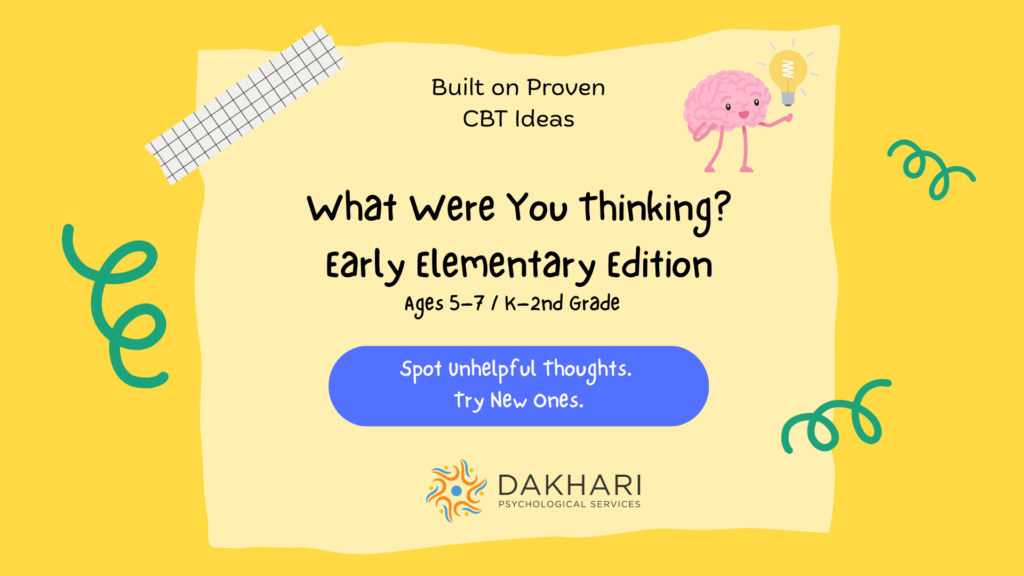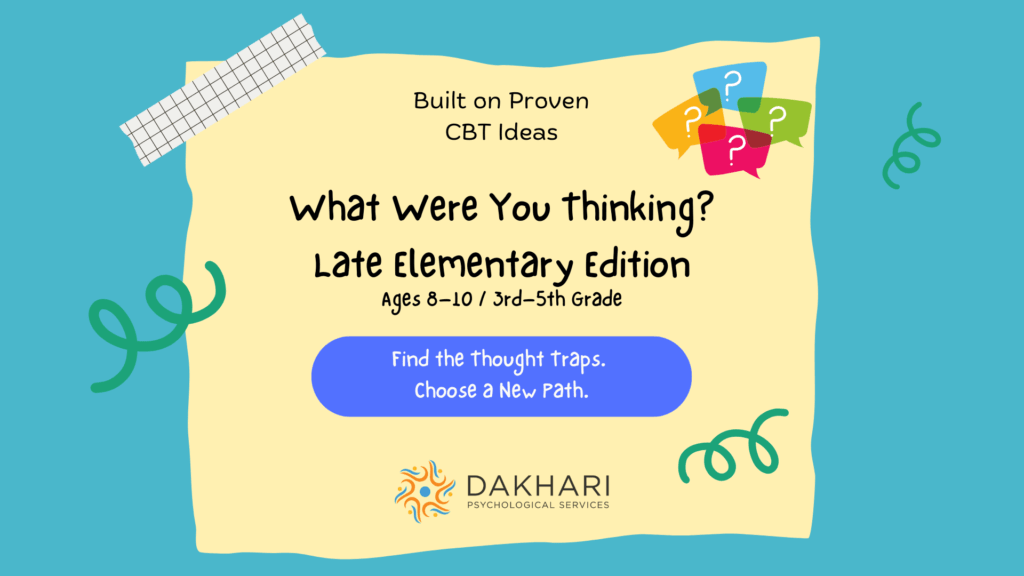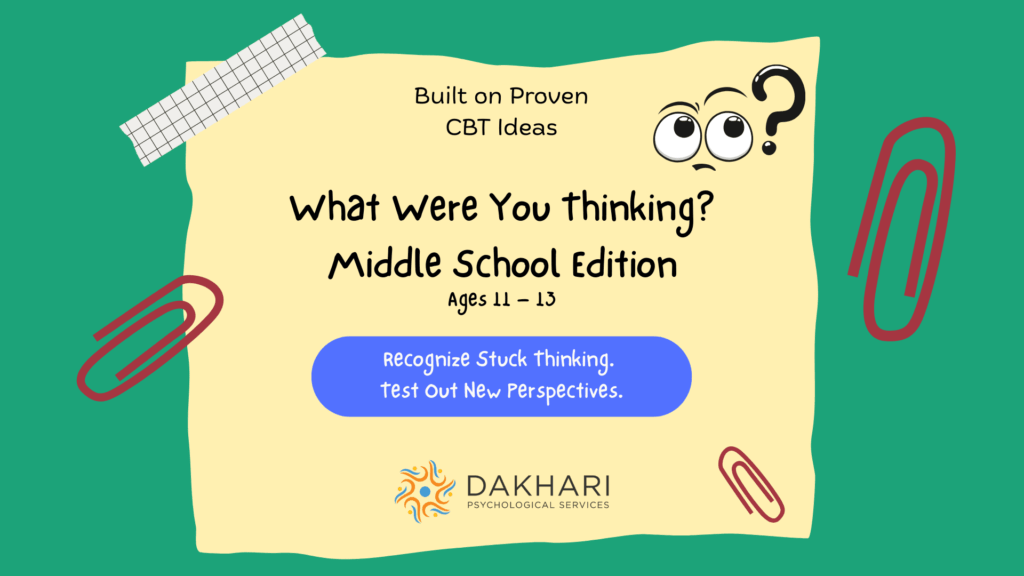Finally! The Parent Playbook
to help you help your child!
Focused on one essential CBT skill: helping kids notice their thoughts — the first step toward choosing more helpful thinking.
Not an overwhelming CBT manual: instead, a parent-friendly resource that gives you just what you need to guide your child.
Clear framework included: a simple, brief CBT overview so you understand how and why these tools work.
Written for parents, not clinicians: approachable language you can actually use at home.
30 ready-to-go practice scenarios: developmentally appropriate and relatable for each age group.
No more pressure in the moment: you won’t have to struggle to invent scenarios on the spot or risk hitting emotional ‘hot buttons’ that shut your child down.




